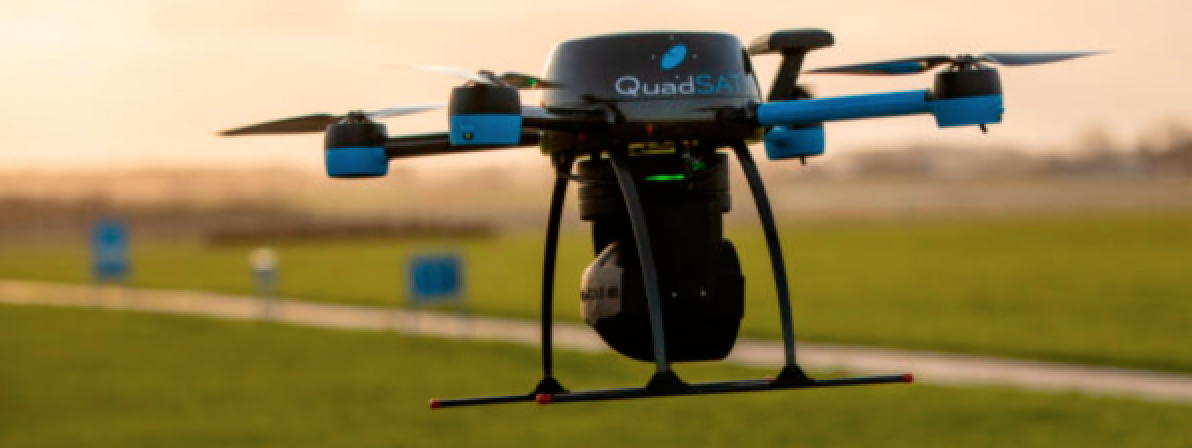Joakim Espeland is the CEO and co-founder of QuadSAT, a Danish company that has developed brand new tools and techniques for testing and calibrating satellite antennas. He is an entrepreneur, electrical and mechanical engineer as well as a satellite field engineer and examiner. Joakim developed QuadSAT from original idea to start up company to scale up.

What is your professional experience and how did you first become involved in the SATCOM industry?

Joakim Espeland
I began working as a telecoms technician in safety and security 16 years ago. I went into SATCOM as a service engineer in the maritime and offshore sector for the oil and gas industries 11 years ago.
It was while working in these sectors that I observed a gap in quality assurance within the satellite communications sector.
Theft detection and fire and gas detection was tested rigorously to the extent that failures almost never happened.
As the digital transformation of our society is happening, communications equipment sits at the centre as the enabling technology and it needs to be robust and dependable, as lives today truly do depend on it.
I was able to experience that the satellite ground segment needed improved methods for testing and calibration, but the right tools needed did not exist. When at university, I worked on a project with Andrian Buchi, exploring how drones could effectively be used for satellite antenna testing. It was this project that paved the way for a career in the SATCOM industry.
What is your biggest career achievement to date?
Joakim Espeland
After completing the university project, we could see that by using emerging drone technology as a platform, the satellite industry would be able to monitor the performance of all satellite ground equipment on location, at the accuracy level that could previously only be expected to be achieved in dedicated test facilities.
However, as pretty much any entrepreneurs and innovators will know, having a great idea that solves a real problem and being able to turn that idea in to something tangible doesn’t always go hand in hand. Co -founding QuadSAT in 2017 and being able to turn concept into reality has without a doubt been my greatest professional achievement to date.
What motivates you?
Joakim Espeland
The satellite industry is going through a period of transition like never before, and if it is to deliver the networks required for future connectivity, it simple has to employ much more effective testing solutions for the ground segment than are widely in use at the moment. I’m passionate about delivering improvements for satellite and ground segment operators, and it is this that motivates me day to day.
What do you think are the biggest challenges currently being faced by the SATCOM industry?
Joakim Espeland
Both the space and the ground segments have become increasingly complex over recent years. The demand for increased connectivity and high availability has led to the expansion and launch of mega constellations in LEO, as well as the development of multi- orbit networks, and the need for agility across frequency bands.
To manage these changes successfully, the industry needs to address challenges around RF interference, spectrum management, and antenna capabilities. Concurrently, the industry also has the emerging technologies of 5G and IP to contend with.
If the satellite communication industry is to remain relevant and meet the connectivity needs of tomorrows users, effective methods for antenna testing and calibration are critical. Traditional methods are not efficient or cost effective because some antennas have to be relocated to off-site facilities to be tested. This results in transportation costs as well as costs incurred because of downtime. Another issue with the traditional method of testing the antenna off site in a constructed environment is, the results do not factor in the antenna’s natural environment.
Tell us more about QuadSAT and what it is trying to achieve.
Joakim Espeland
Without accurate antenna testing and calibration services, the risk of RF interference to satellites increases significantly. Maintaining antenna accuracy and its original specified performance is crucial if satellite operators are to deliver and maintain world-class connectivity services. QuadSAT’s drone-based system provides users with flexible and accurate antenna testing and calibration.
A broad range of testing missions can be undertaken depending on user requirements, and antennas can be tested regardless of location.

The system provides pre- and post-flight software to ensure repeatability, control over the drone during measurements, ease of operation, and data delivery in a uniform format. By improving accessibility to high-quality testing solutions for the ground segment, operators can use testing to improve services for their customers. With this solution, we can providing quality assurance throughout the SATCOM industry.
By improving accessibility to high-quality testing solutions for the ground segment, operators can use testing to improve services for their customers. The system ensures repeatability, control over the drone during measurements, ease of operation and data delivery in a uniform format, providing quality assurance and improving reliability throughout the SATCOM industry.
Drone - based testing, c alibration, and verif ic ation will enable the net works required for the c onnectivit y of the future. The abilit y to per for m accurate antenna testing and verif ic ation on site will transfor m RF management by reducing c osts and logistic al challenges.
Where do you see your company in five years’ time?
Joakim Espeland
Since we founded the company in 2017, we have raised several successful rounds of financing. This has enabled us to build the solution, grow the company, and run campaigns with a number of operators, including OneWeb and a project with ESA. Last year, we went from offering a managed service only, to also providing a productised version of our drone-based antenna and radio frequency test and measurement solution.

This development was possible because of funding received from the ESA ARTES Core Competitiveness programme and support from partners such as the Global VSAT Forum (GVF). The productized version allows companies to acquire their own version of the system and carry out testing missions as required, so it particularly suits companies with extensive testing programs.
In the next five years, we see QuadSAT as an integral part of the industry, monitoring and modelling of the radio spectrum to enable maximum usage of the radio spectrum and increase reliability of global communication systems.
quadsat.com


